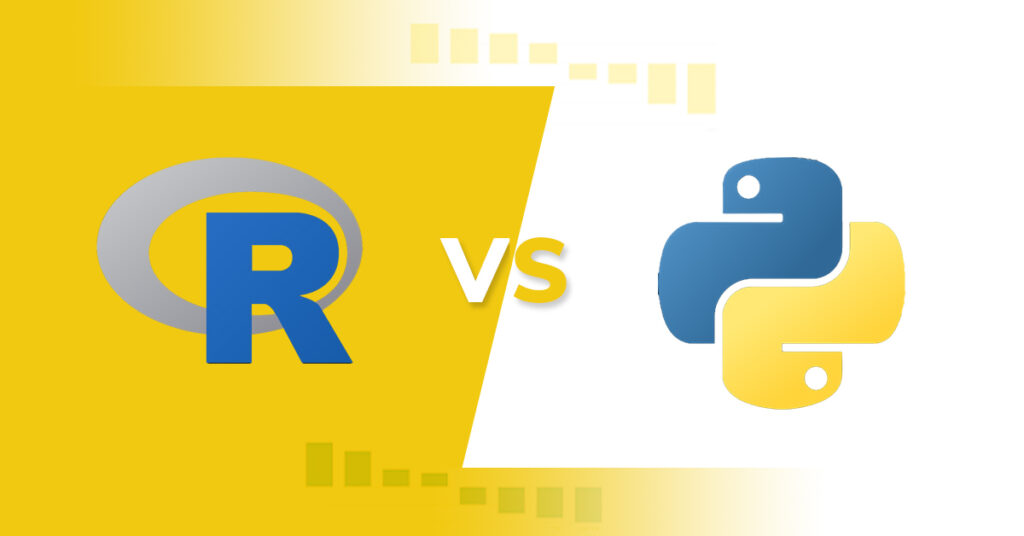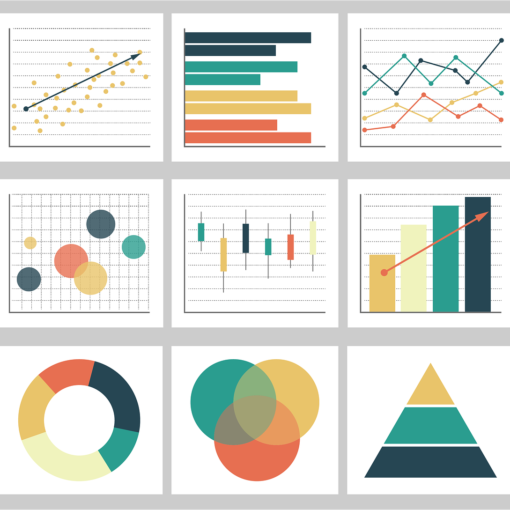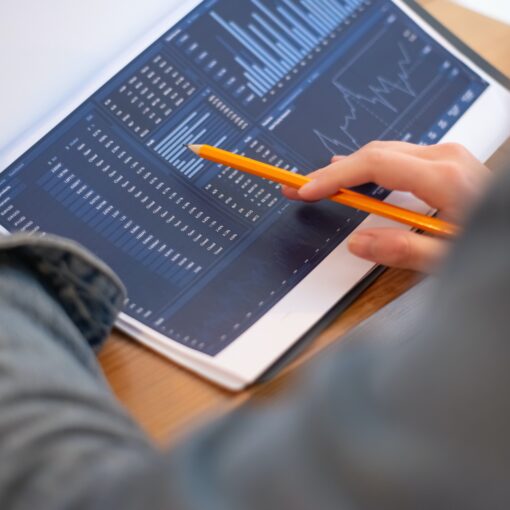In the world of data analysis, two programming languages have emerged as the most popular tools for the job: R and Python. Both languages have their own unique strengths and weaknesses, and both have extensive libraries specifically designed for data analysis. In this article, we will explore the key differences between R and Python, discuss their strengths and weaknesses, and dive into their use cases to help you decide which language is best suited for your needs.
Introduction to R and Python: A brief overview

R, developed in 1993 by Ross Ihaka and Robert Gentleman, is a programming language specifically designed for statistical computing and graphics. It has been widely adopted by statisticians, data scientists, and researchers due to its powerful capabilities in handling, analyzing, and visualizing data. R is open-source and has a strong community of contributors who are constantly developing new packages to extend its functionality.

On the other hand, Python, created by Guido van Rossum in 1991, is a high-level, general-purpose programming language that has become increasingly popular in recent years due to its versatility, readability, and extensive library support. Although Python was not initially designed for data analysis, its flexibility and the development of numerous libraries over the years have made it a powerful tool for handling and analyzing data.
Comparing R and Python: Key differences
To dive deeper into the Python vs R debate, let’s highlight some of the key differences between the two languages.
- Purpose: R was specifically designed for data analysis and statistics, while Python is a general-purpose programming language. As a result, R has a more specialized focus on data analysis tasks, while Python’s versatility allows it to be used for a wide range of applications beyond data analysis. If you are more interested in Data Visualization, you should read this article about the best programming languages for Dataviz.
- Syntax: R has a unique syntax that can be complex and somewhat difficult for beginners to learn. In contrast, Python is known for its readability and ease of use, making it an excellent choice for those new to programming.
- Community: R has a strong community of statisticians and data scientists, while Python has a broader user base that includes web developers, system administrators, and software engineers. This means that Python may have more diverse library support, but R’s community is more focused on data analysis.
- Graphical capabilities: R is known for its powerful graphical capabilities, allowing users to create intricate and detailed visualizations. Python also has visualization libraries such as Matplotlib and Seaborn, but R’s graphics capabilities tend to be more advanced.
R vs Python: Strengths and weaknesses
Each language has its own set of strengths and weaknesses, which can influence the choice between R or Python for data analysis.

R
Strengths:
- R is specifically designed for data analysis, providing a wide range of statistical techniques and tests.
- R has exceptional graphical capabilities, offering a variety of customizable visualization options.
- R boasts a large, active community that focuses on data analysis, resulting in numerous packages and resources.
Weaknesses:
- R has a steeper learning curve due to its unique syntax, which can be challenging for beginners.
- R is generally slower than Python, making it less suitable for large-scale data processing tasks.
- R’s general-purpose programming capabilities are more limited than Python’s, making it less versatile for applications beyond data analysis.
Python
Strengths:
- Python’s readability and simplicity make it an accessible language for beginners.
- Python is a versatile, general-purpose language that can be used for a wide range of applications beyond data analysis.
- Python has a large and diverse community, resulting in extensive library support and resources.
Weaknesses:
- Python’s data analysis capabilities are not as specialized as R’s, given that it was not initially designed for this purpose.
- Python’s graphical capabilities, while still powerful, are not as advanced as R’s.
Data analysis with R: Advantages and use cases
R is a powerful language for data analysis, offering a range of advantages for those working with data:
- Advanced statistical capabilities: R was designed for statistics, making it an ideal choice for those who require advanced statistical techniques, tests, and models for their data analysis tasks.
- Superior data visualization: R’s graphical capabilities are second to none, allowing users to create intricate, customizable visualizations that can reveal hidden patterns and insights in their data.
- Domain-specific packages: R’s community has developed a wealth of domain-specific packages tailored to various industries and fields, such as bioinformatics, finance, and social sciences. This makes R particularly useful for those working in specialized areas.
Some common use cases for R in data analysis include:
- Statistical modeling and hypothesis testing
- Time series analysis and forecasting
- Cluster analysis and classification
- Text mining and sentiment analysis
Data analysis with Python: Advantages and use cases
Python’s versatility and ease of use make it an excellent choice for many data analysis tasks:
- Readability and simplicity: Python’s straightforward syntax and good readability make it an accessible language for those new to programming or data analysis.
- Scalability: Python is generally faster than R and can handle larger datasets, making it suitable for big data processing and machine learning tasks.
- Integration with other tools: Python’s versatility allows it to integrate easily with other software and tools, such as databases, web frameworks, and cloud services.
Some common use cases for Python in data analysis include:
- Data cleaning and preprocessing
- Data exploration and visualization
- Machine learning and predictive modeling
- Natural language processing and text analytics
R and Python libraries for data analysis
Both R and Python have extensive libraries designed specifically for data analysis, which can significantly enhance their capabilities.
R libraries for data analysis
Some popular R libraries for data analysis include:
- dplyr: A powerful library for data manipulation and transformation.
- ggplot2: A popular library for creating complex, customizable visualizations.
- caret: A comprehensive library for machine learning and predictive modeling.
- shiny: A web application framework for turning R-based analyses into interactive web applications.
Python libraries for data analysis
Some popular Python libraries for data analysis include:
- NumPy: A fundamental library for numerical computing in Python.
- Pandas: A powerful library for data manipulation and analysis.
- Scikit-learn: A comprehensive library for machine learning and predictive modeling.
- Matplotlib: A popular library for creating static, animated, and interactive visualizations.
R or Python: Which one should you choose?
The choice between R and Python for data analysis largely depends on your specific needs, preferences, and goals. If you require advanced statistical capabilities, superior data visualization, or are working in a specialized field, R may be the better choice. On the other hand, if you value simplicity, scalability, and versatility, Python may be more suitable.
For those who are just starting their data analysis journey, Python’s readability and ease of use make it an excellent choice. However, it’s worth considering that learning both languages can be beneficial, as each has its own unique strengths and can complement the other in various tasks.
Learning R and Python for data analysis
There are numerous resources available to help you learn R and Python for data analysis. Online tutorials, courses, and textbooks can provide valuable guidance in getting started with either language. Additionally, communities such as Stack Overflow, Reddit, and GitHub offer helpful forums for discussing challenges and sharing knowledge.
Some popular resources forlearning R include:
- R for Data Science by Hadley Wickham and Garrett Grolemund: A comprehensive guide to data science in R, covering everything from data visualization to machine learning.
- DataCamp: An online learning platform with interactive courses in R and Python for data analysis.
- Coursera:
- Offers a range of courses in R and Python for data analysis, including courses from top universities such as Johns Hopkins and the University of Michigan.
- Data Analysis with R Programming: This course is part of the Google Data Analytics Professional Certificate.
Some popular resources for learning Python include:
- Python for Data Analysis by Wes McKinney: A comprehensive guide to data analysis in Python, covering everything from data manipulation to machine learning.
- DataCamp: An online learning platform with interactive courses in Python for data analysis.
- Coursera:
- Coursera Offers a range of courses in Python for data analysis, including courses from top universities such as the University of Michigan and IBM.
- IBM Data Science Professional Certificate: Focused on Data Science using Python.
- GOOGLE Advanced Analytics Professional Certificate: This is the advanced version of the Google Data Analytics Professional Certificate. The focus is on Python and Data Science.
R and Python integration: Working together for better results
While R and Python have their own unique strengths, they can also work together to provide even better results in data analysis tasks. There are several ways to integrate R and Python, including using libraries and tools that allow them to communicate with each other.
One popular tool for integrating R and Python is reticulate, an R package that allows users to call Python code from within R. This can be useful for tasks such as machine learning, where Python has extensive libraries, but R may be preferred for data visualization.
Similarly, rpy2 is a Python library that allows users to call R functions and objects from within Python. This can be useful for tasks such as statistical modeling, where R has extensive capabilities.
By integrating R and Python, users can take advantage of the strengths of both languages, leading to more efficient and effective data analysis.
Conclusion: R and Python in the data analysis landscape
In conclusion, R and Python are both powerful tools for data analysis, each with their own unique strengths and weaknesses. When deciding between the two languages, it’s important to consider your specific needs, preferences, and goals. R may be the better choice for those requiring advanced statistical capabilities and superior data visualization, while Python may be more suitable for those valuing simplicity, scalability, and versatility.
However, learning both languages can be beneficial, as they can complement each other in various tasks and allow for more efficient and effective data analysis. With the extensive libraries available for both languages and tools for integrating them, users can take advantage of the strengths of both R and Python to achieve even better results in their data analysis tasks.
So whether you choose R, Python, or both, there’s no denying that they are both essential tools in the data analysis landscape.




